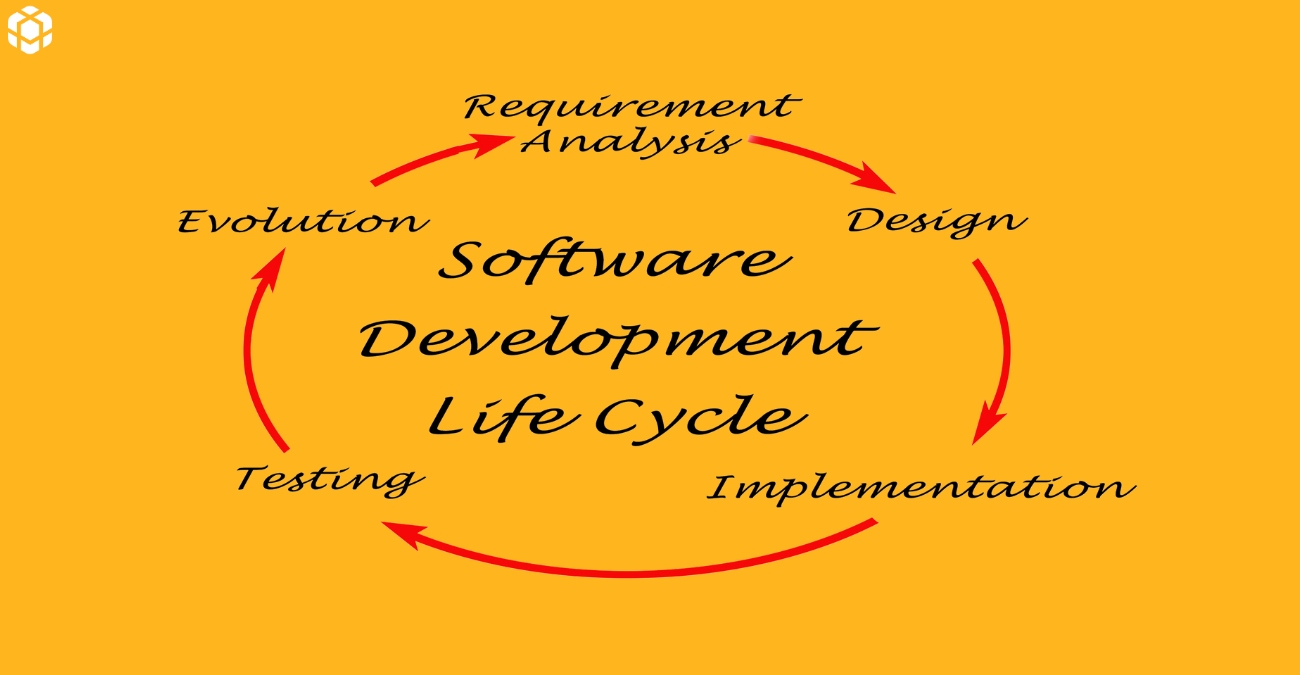
In today’s digital era, companies cannot afford to overlook the criticality of software development. Creating software that meets the expectations of customers, employees, and stakeholders begins with a comprehensive software development strategy.
A well-planned strategy helps an organization better understand project requirements, allocate resources efficiently, and deliver high-quality products within budget and time constraints. The same is for the software development industry where a well-defined strategy for your approach to the project makes all the difference.
This article discusses the software development strategy in detail, starting from its definition and significance to detailing each strategy applied during the software development lifecycle.
Software development: What is it?
To understand the term software development, we must have a clear definition of the word software. Software is a set of instructions or programs used to execute various tasks on the computer. To develop these programmes, a series of steps are followed by computer programmers, and the whole process is collectively referred to as software development.
The process is also commonly referred to as SDLC (Software Development Life Cycle), which consists of multiple stages that offer a method to make products that satisfy user needs and technical requirements. It helps in managing and controlling the software development process efficiently, from initial planning to deployment and maintenance.
Software development encompasses multiple fields and, therefore, must be thoroughly planned before initiation. Lack of planning and strategy before jumping onto developing software can lead to catastrophic consequences such as low-quality output, which can ultimately harm the company’s reputation. Therefore, crafting a software development strategy is crucial for best results.
Commencing a software development project often comes with a sense of being overwhelmed, leading to hasty decisions. To alleviate this challenge, we’ve crafted an insightful article designed to guide you through the process of formulating an effective software development strategy.
What is meant by software development strategy?
Software development strategy or a master plan for your project are synonymous with each other. The strategy covers everything from the initial requirements specification phase to the deployment and maintenance part of the process. It serves as a roadmap guiding the entire software development lifecycle while also ensuring alignment with company objectives.
When we follow a well-thought-out strategy, it’s like having a map that guides us through creating software. It includes ways to organize work, use resources smartly, and deal with possible problems. It’s not just about the technical parts; it’s also about the core ideas that shape how we create software, blending creativity with a clear purpose. A good strategy helps everyone work together smoothly, making things efficient and helping us achieve our goals when making software.
What is the significance of a well-defined software development strategy?
A well-defined software development strategy offers several advantages to businesses in terms of goal alignment and resource utilization. Some key advantages of a thorough software development strategy are mentioned below:
- Goal alignment: It ensures that the software development process is aligned with the broader objectives and goals of the organization. This alignment guarantees that every step taken in creating software contributes to fulfilling the company’s vision and mission.
- Risk mitigation: By taking a strategic approach, organizations can recognize and manage possible risks early in the app development cycle. Proactive risk management reduces the likelihood of expensive mistakes, hold-ups, and project failures.
- Enhanced efficiency: A well-defined plan removes uncertainty and simplifies the process of development. It creates communication channels, outlines team member roles and responsibilities, and streamlines workflows to boost output and shorten time to market.
When to implement software development strategy?
Ideally, you should start implementing the software development strategy during the planning phase of the project. To make sure that the development process fits with your objectives, available resources, and deadlines, it’s critical to establish your strategy as soon as possible.
A well-defined strategy makes it easier to set goals, allocate resources wisely, and lead the team through the project lifecycle. Nevertheless, strategies can also be modified or updated to take into account new demands or unforeseen difficulties during the development process.
A software development strategy, if implemented at the right time, allows you to:
- Enhance direct communication
- Enhance your marketing strategy
- Improve customer engagement
- Identify the need to outsource the project early on
- Plan long-term expenses in advance
Different software development strategies
There are various strategies that are most effective for the development of any software project. It has been demonstrated that these tactics yield high-quality results. A few of them are discussed below:
1. Clearly define the scope of your product
Defining the product scope is an absolutely fundamental aspect of a well-thought-out and comprehensive software development strategy. It serves as the foundation for the entire development process. Without a well-defined product scope, teams are susceptible to a multitude of negative consequences that can significantly impact the success of the project.
When a product scope is clearly defined, software development teams are able to effectively manage their time and resources, ensuring that key features and functionalities are developed in a timely manner. This not only helps maintain project deadlines but also enables teams to allocate their resources efficiently, leading to enhanced productivity and overall project success.
Moreover, a defined product scope plays a pivotal role in fostering better collaboration among team members. When everyone involved in the project has a shared understanding of the product’s scope and objectives, it becomes easier to work together towards a common goal. A well-defined product scope also contributes to significant cost savings. By clearly outlining the boundaries and requirements of the software product, teams can avoid unnecessary and costly deviations from the original plan.
2. Specify software requirements
In software development, thoroughly understanding user needs and project requirements is essential. This phase revolves around comprehending the client’s objectives and expectations. It involves gathering functional and non-functional requirements, conducting stakeholder interviews, and documenting user stories.
These insights are methodically organized, classified, and documented to form a structured blueprint. This documentation covers both the non-functional components, like performance or security requirements, and the functional components, which define what the software must accomplish. Moreover, the strategy emphasizes continual validation, ensuring the completeness and consistency of these requirements while also accommodating changes that may arise throughout the development journey.
The importance of the requirements specification phase cannot be underestimated, as it serves as the fundamental basis for the rest of the project.
3. Choose the methodology for the development process
Choosing the right methodology for developing any project makes all the difference. Each methodology has its own advantages and disadvantages that need to be taken into account before deciding which one to use. In software development, there are three popular methodologies: Agile, Lean, and Plan-based.
Agile
Agile is an iterative and flexible approach to software development that emphasizes collaboration, adaptability, and customer feedback. It promotes breaking down the project into smaller increments or iterations, known as sprints, allowing for continuous planning, development, testing, and delivery of working software.
In agile, emphasis is placed on incorporating and managing change rather than sticking to a rigid plan. The teams work flexibly to adjust priorities and features based on feedback and evolving requirements during the development phase.
Lean
Lean software development adopts principles from Lean manufacturing, applying them to the software development process. It involves understanding customer needs and preferences to ensure that the software being developed fulfills those requirements effectively and emphasizes maximum value to customers.
A fundamental principle part of the Lean development model called Kaizen or continuous improvement, encourages a culture of ongoing improvement where team members actively seek ways to enhance processes, products, and workflows. Startups and small development teams often adopt Lean principles due to their flexibility and adaptability.
Plan-based
Plan-based software development can be implemented through various models, such as the Waterfall model or V-Model. It follows a traditional, sequential approach with distinct phases such as requirements specification, design, implementation, testing, deployment, and maintenance. It involves detailed upfront planning and documentation, aiming for predictability but often with limited flexibility. It is best for projects that require in-depth advanced planning to leave no chances of error or ambiguity during implementation.
4. Analyze tasks and prioritize them wisely
When developing software, it is expected to get overwhelmed with loads of requirements from stakeholders. Inadequate management of these requirements may have detrimental effects on the requirements specifications process, including the development of dependencies or inconsistencies between the requirements.
Therefore, it is necessary to follow a roadmap when dealing with requirements. The first and foremost thing that you must do is prioritize your requirements wisely so that your workload remains manageable and deadlines are met accordingly. Avoid taking excessive feedback and applying it to your work, as most of the time, it doesn’t add any value to your project.
5. Utilize automation to speed up tasks
Everyone’s life has been so much easier thanks to automation, and software developers are no strangers to this. Introducing automation across development, testing, and deployment significantly enhances the efficiency and reliability of the entire process. A few you can utilize automation include:
- DevOps: Embracing the DevOps approach, especially practices like continuous integration and delivery (CI/CD), leads to more frequent and dependable software releases. DevOps aligns development, testing, and production environments, fostering collaboration and enhancing communication between teams. This synchronization results in faster and more reliable software deployments.
- Test automation: Test design, execution, and planning are standardized by test automation. It involves automating the process of testing software functionalities, ensuring consistent and thorough evaluation. Automating test execution reduces manual effort, increases accuracy, and accelerates the testing phase, thereby enhancing overall quality.
6. Carry out exhaustive testing
After the development phase is complete, you might think that the software is completely ready, but that’s not the case. The testing phase that begins after the completion of the design and implementation is just as extensive and intricate as the design and implementation phases.
Testing your software system thoroughly ensures the product you have built or are building is functioning optimally, without fail. Software testing is carried out in a variety of ways by dedicated testing teams. Like other phases in the software development cycle, testing also requires thorough planning and designing.
The QA engineers and testers get to work when the client provides the project specifications. They participate in discussions during all stages of software development, specify requirements, and examine the documentation prior to product testing.
Takeaway
To summarize, developing a software development strategy involves analyzing the project requirements, choosing the right development approach, establishing a feasible plan, executing the plan, and establishing coding standards. Continuous improvement is necessary to make sure that the project remains on the right track.
Therefore, regular reviews and revisions should be conducted to ensure the project is delivered as planned. By following these steps, development teams can create high-quality software that meets the requirements of the project efficiently.





